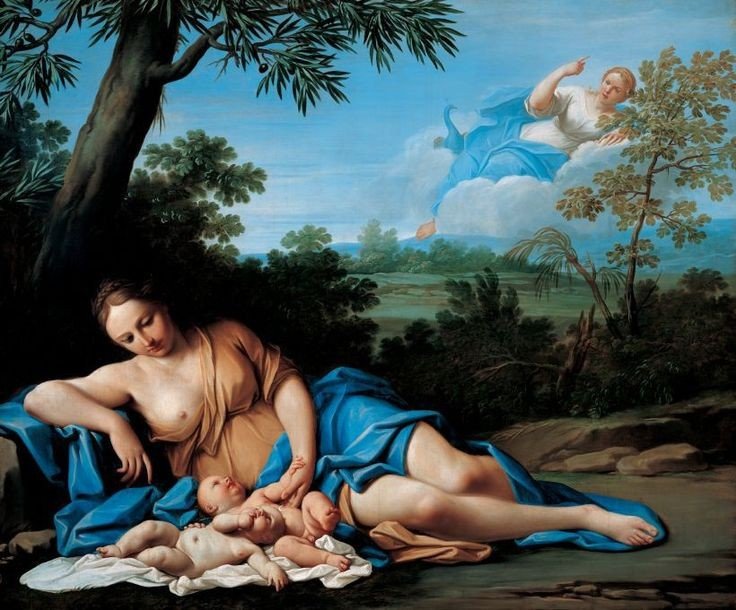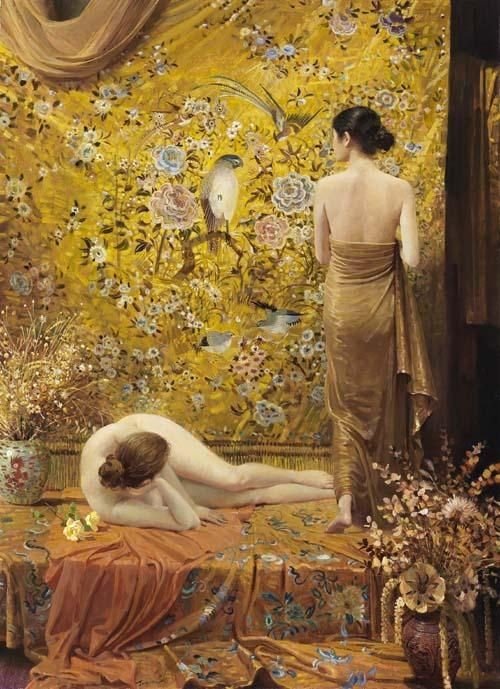Exploring the Iconography of Madonna and Child with Saint Anne, A Masterpiece of Christian Art
The painting “Madonna and Child with Saint Anne” is a timeless masterpiece that has captivated viewers for centuries. This iconic artwork, created by numerous artists throughout history, holds significant religious and artistic importance, portraying the Virgin Mary, the baby Jesus, and Saint Anne in a serene and contemplative scene.
The Iconography:
At the heart of the painting is the Madonna, depicted as a tender and nurturing mother, cradling the infant Jesus in her arms. Her gaze is lovingly fixed upon her child, symbolizing her maternal care and divine connection. The baby Jesus, portrayed with a sense of innocence and purity, reaches out to his mother, forming a poignant bond between mother and son.
Hovering above them is Saint Anne, Mary’s mother, depicted as an ethereal presence in the clouds. She watches over the mother and child with a sense of benevolent protection, emphasizing the importance of familial bonds and intercession within Christian theology.
Symbolism and Allegory:
The painting is rich in symbolism and allegory, each element conveying layers of meaning and theological significance. The Madonna and Child symbolize the divine incarnation, with Jesus being the Son of God born of the Virgin Mary. Their tender embrace embodies the concept of divine love and human salvation, inviting viewers to contemplate the mysteries of faith.
Saint Anne’s presence adds depth to the narrative, highlighting the continuity of the divine plan across generations. As the grandmother of Jesus, she represents the lineage of salvation and the role of maternal guidance in nurturing spiritual growth.
Artistic Interpretations:
Throughout history, artists have interpreted the theme of Madonna and Child with Saint Anne in various styles and mediums. From the Renaissance masters like Leonardo da Vinci, who famously depicted the subject in his work, to Baroque and Rococo artists who infused the scene with dramatic flair and emotional intensity, each interpretation offers a unique perspective on the sacred theme.
Cultural and Historical Context:
The painting reflects the cultural and historical context in which it was created, serving as a visual expression of religious devotion and theological doctrine. During the Renaissance, artists sought to reconcile classical ideals of beauty with Christian spirituality, resulting in masterpieces that exemplify the era’s intellectual and artistic achievements.
Legacy and Influence:
The Madonna and Child with Saint Anne has left an indelible mark on art history, inspiring countless artists and viewers alike. Its enduring popularity speaks to the universal appeal of its themes and the timeless beauty of its composition. From devotional objects to museum masterpieces, the painting continues to be celebrated and studied as a quintessential example of Christian iconography.
Conclusion:
In conclusion, the painting “Madonna and Child with Saint Anne” stands as a testament to the power of art to transcend time and space, inviting viewers into a world of beauty, mystery, and contemplation. Through its rich symbolism, expressive composition, and profound spiritual resonance, it continues to captivate and inspire audiences around the world, reaffirming its status as a true masterpiece of Christian art.





